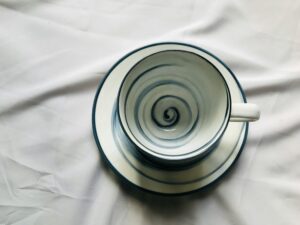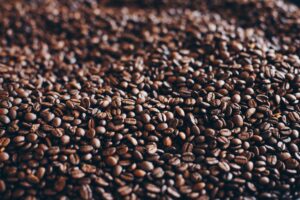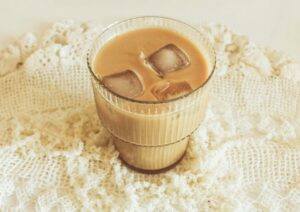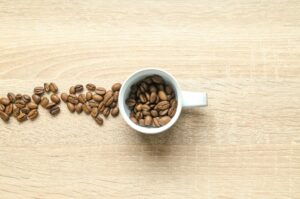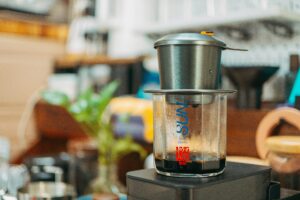When people talk about caffeine, two drinks almost always dominate the conversation: espresso and coffee. Both are beloved morning rituals, afternoon pick-me-ups, and in some cases, late-night companions. But when it comes to how much caffeine is actually in your cup, myths, misconceptions, and half-truths abound. Some insist espresso will jolt you awake like nothing else, while others swear that a regular cup of coffee has more caffeine overall. The truth lies in the numbers — and the science behind them.
Table of Contents
In this in-depth guide, we’ll explore the real caffeine content in espresso vs coffee, break down the measurements, look at the factors that affect caffeine levels, and help you decide which one is right for your lifestyle and caffeine tolerance.
Understanding Caffeine Basics
Caffeine is a natural stimulant found in coffee beans, tea leaves, cacao pods, and other plants. In coffee, caffeine content can vary dramatically depending on the type of bean, roast level, brewing method, and serving size. It works by blocking adenosine, a neurotransmitter that promotes relaxation, leading to increased alertness and reduced fatigue. However, the amount of caffeine you consume determines the strength of this effect — and whether it’s energizing or anxiety-inducing.
The challenge in comparing espresso and coffee is that they’re measured and consumed differently. Espresso is concentrated and typically served in small amounts, while drip or brewed coffee comes in larger servings. This is where confusion often starts.
How Much Caffeine Is in Espresso?
On average, a single shot of espresso (about 1 ounce or 30 milliliters) contains 63–75 milligrams of caffeine. That may seem low compared to coffee, but remember — that’s for just one ounce of liquid. Espresso is brewed under high pressure, which extracts flavor and caffeine quickly and produces a concentrated shot.
If you order a double shot — standard in most coffee shops — you’re looking at 126–150 milligrams of caffeine in just 2 ounces of liquid. That’s a high caffeine density, which is why espresso delivers such a quick hit of alertness.
Factors that influence espresso’s caffeine content include:
- Grind size – Very fine grinds expose more surface area, extracting more caffeine.
- Bean type – Robusta beans have almost double the caffeine of Arabica beans.
- Extraction time – Over-extraction can increase bitterness and caffeine levels.
- Roast level – Contrary to popular belief, darker roasts often have slightly less caffeine than lighter roasts.
How Much Caffeine Is in Coffee?
A standard 8-ounce (240 milliliters) cup of brewed coffee contains 80–120 milligrams of caffeine on average. This range depends heavily on the brewing method and coffee-to-water ratio. Drip coffee makers, pour-over methods, and French presses all extract caffeine differently.
If you drink a 12-ounce coffee, which is common in many cafés, the caffeine content can easily climb to 120–180 milligrams. A large 16-ounce (grande) brewed coffee at some chains can exceed 200 milligrams — significantly more than a double espresso.
Key factors influencing brewed coffee caffeine content:
- Brew time – Longer steeping generally means more caffeine extraction.
- Water temperature – Hotter water extracts caffeine faster.
- Bean-to-water ratio – Stronger brews have more caffeine per ounce.
- Brewing method – Cold brew, French press, and drip all yield different amounts.
Espresso vs Coffee: By the Numbers
To truly understand the caffeine difference, it helps to compare milligrams per ounce:
| Drink Type | Typical Serving Size | Average Caffeine Content | Caffeine per Ounce |
| Espresso (single shot) | 1 oz (30 ml) | 63–75 mg | ~63–75 mg |
| Espresso (double shot) | 2 oz (60 ml) | 126–150 mg | ~63–75 mg |
| Brewed coffee | 8 oz (240 ml) | 80–120 mg | ~10–15 mg |
| Cold brew | 8 oz (240 ml) | 100–160 mg | ~12–20 mg |
| Instant coffee | 8 oz (240 ml) | 60–90 mg | ~7–11 mg |
When you look at it per ounce, espresso is far more concentrated. But because coffee is served in much larger volumes, a typical cup often contains more caffeine overall than a single shot of espresso.
Why People Think Espresso Has More Caffeine
The misconception likely comes from espresso’s strong taste and concentrated delivery. Espresso feels more powerful because you consume its caffeine in a small, intense serving — often in a matter of seconds. This rapid intake can lead to a quicker perceived energy boost compared to sipping coffee over 20 minutes. In reality, the total caffeine in a cup of coffee may be higher.
For example:
- Single espresso: ~65 mg caffeine
- 12 oz coffee: ~150 mg caffeine
You’d need more than two single shots of espresso to match that coffee’s caffeine content.
Factors That Change the Caffeine Equation
The real numbers can shift depending on brewing choices and personal habits.
Bean Variety
Arabica beans typically have 1.2% caffeine content, while Robusta beans can have 2.2–2.7%. Espresso blends often contain some Robusta to enhance crema and caffeine kick.
Roast Level
Light roasts retain slightly more caffeine by weight than dark roasts, but dark roasts are less dense, so a scoop of dark roast might actually have more caffeine depending on measurement method.
Brewing Method
Espresso uses high pressure (9 bars) and short brew time (~25–30 seconds), while drip coffee may brew for 4–5 minutes. Longer extraction often means more caffeine in the final cup.
Serving Size
A “tall” coffee from a café might be 12 ounces, while a latte may have just one or two ounces of espresso. The caffeine difference often comes down to portion.
Caffeine Tolerance and Sensitivity
Your body processes caffeine at different rates based on genetics, age, weight, and liver metabolism. Some people can drink espresso at 9 p.m. and sleep soundly, while others feel jittery after a morning cappuccino.
The FDA’s general guideline for most healthy adults is up to 400 milligrams of caffeine per day — roughly equivalent to four 8-ounce cups of brewed coffee or six single espressos. Pregnant individuals, those with heart conditions, and people sensitive to caffeine should aim for lower limits.
Espresso vs Coffee: Which Should You Choose?
If you want:
- Quick, concentrated energy – Espresso delivers caffeine rapidly in a small serving.
- Long-lasting sip – Brewed coffee provides a steady dose you can enjoy over time.
- Less liquid intake – Espresso packs more caffeine per ounce, so you drink less volume.
- Maximum caffeine – Large brewed coffees or cold brews often have the highest totals.
Practical Tips for Managing Caffeine Intake
- Know your numbers – Track how many milligrams you consume daily to avoid exceeding safe limits.
- Alternate with decaf – Switch one or more drinks to decaf to cut caffeine without losing the coffee ritual.
- Mind the time – Avoid caffeine within 6–8 hours of bedtime to protect your sleep.
- Watch hidden caffeine – Tea, soda, energy drinks, and even chocolate contribute to your daily total.
Final Verdict
While espresso is undeniably more concentrated in caffeine per ounce, a standard cup of brewed coffee often contains more total caffeine simply because it’s served in a larger volume. The “stronger” reputation of espresso comes from its bold flavor and rapid delivery, not necessarily from having more caffeine overall.
If your goal is a quick boost without too much liquid, espresso is the winner. If you want a larger drink that keeps you going for longer, brewed coffee is the better choice. Ultimately, the right option comes down to taste preference, caffeine tolerance, and how you like to enjoy your daily cup.

